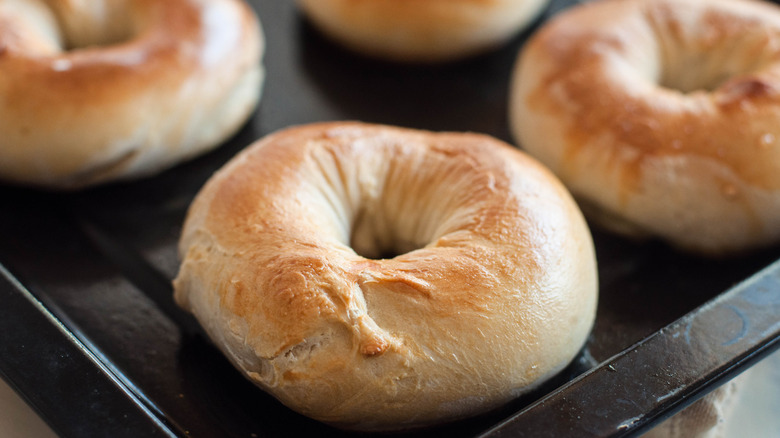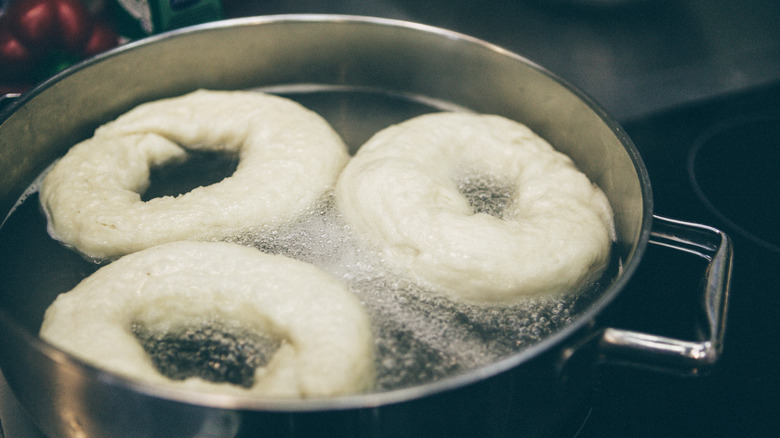The Old School Boiling Trick That Gives Bagels Their Signature Shine
Sure, you could just eat toast for breakfast, or even an English muffin, topped with butter and jam. But there's a reason that bagels are an American breakfast staple — something about the golden brown exterior, chewy interior, and soft, fresh flavor has us coming back for more, time and time again. So what makes bagels so special? It might not be what you expect.
As it turns out, one of the main distinguishing factors of traditional bagels is that they're boiled for at least 15 to 20 seconds before being baked. While such a brief step might seem unnecessary, it's actually essential to creating both the shiny crust that bagels are known for and their chewy, dense interior. In effect, the hot water pre-gelatinizes, or gels together, the crust, creating a protective barrier. This crust is both delicious and practical, keeping the bagel from rising too much and helping it keep its shape in the oven. Some modern bakeries do skip the boil, or swap it out and steam their bagels in the oven instead for the sake of efficiency. But, according to several dictionary definitions of "bagel," including the Oxford English Dictionary's, the word technically refers to "a dense bread roll in the shape of a ring, made by boiling dough and then baking it." So don't make a rookie mistake when you're making homemade bagels and bypass this step — otherwise, you might not even technically be making bagels at all.
How boiling affects bagels
Even though it's such a short step in the long process of making bagels, there's a lot of minor tweaks you can make to the boiling process that make a big difference on the outcome. For one thing, boil time can vary from 15 seconds on the low end to up to a minute on the high end. The longer you boil your bagel, the thicker the crust and the denser the inside. This is because of that gelatinized crust: Since a thicker crust is stronger, it keeps the bagel's original shape together better and forces a dense crumb to form. Meanwhile, a thin crust leaves more room for expansion and rising; if you want a puffy, softer bagel with a smaller center hole, get your bagels in and out of their hot water bath quickly.
Some bakers also put various ingredients in the water as their bagels boil, much like you might put salt in your pasta water for added flavor and starchiness. Traditionally, lye, a strong base, is added to the water to speed up the Maillard reaction once in the oven to create a more caramelized, nicely browned crust. Nowadays, many people use a touch of baking soda (another strong base) instead.
One final added point in favor of boiling: The boiled crust makes it easier for toppings to stay attached to your homemade bagels. Whether you want to go simple with sesame seeds or more complex by sprinkling a DIY version of Trader Joe's Everything but the Bagel Seasoning on each roll, boiling them first can act as your glue to make it all stick.

